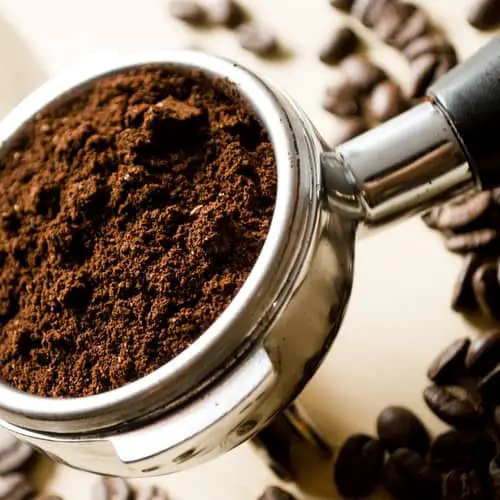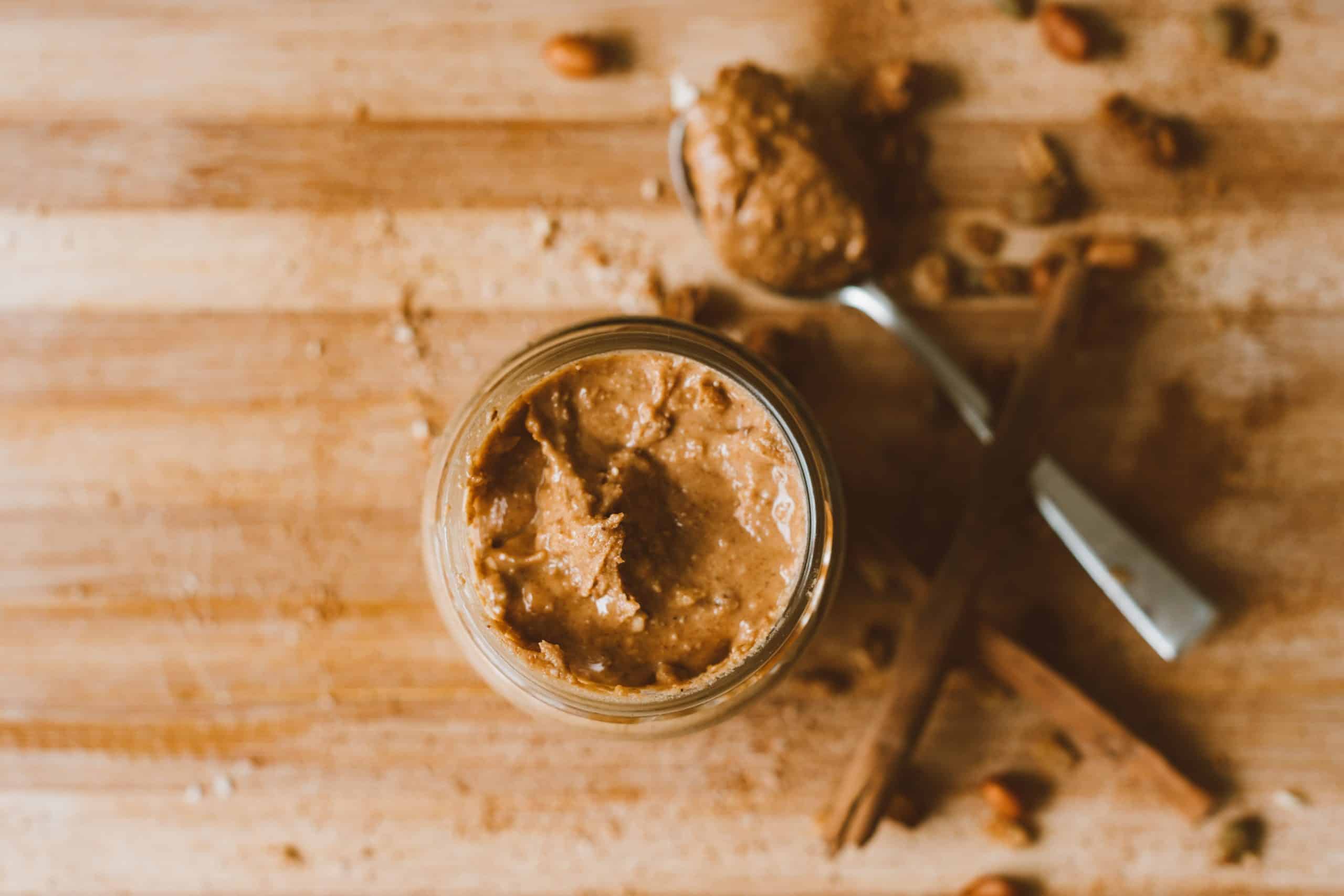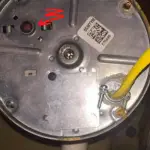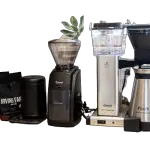
What the hell? It’s not like that coffee can’t just go in the toilet, right? Well, I’m happy to tell you that it cannot! The only thing it does is create a clogged drain and we all know what happens when we have a clogged drain: we call a plumber!
So please don’t think about dumping your coffee grinds down the drain because if you do, mommy will be angry with you!
If you are a coffee lover, there is one thing that you need to know about your morning cup. Coffee grounds make the garbage disposal smell bad and they will clog it up! If this happens, then don’t panic.
How to remove coffee grounds in garbage disposal?
- A lot of water will do the trick. Simple as that. Anything fibrous, such as carrots or lettuce, should be avoided in the garbage disposal.
- You can easily clean out your garbage disposal with white vinegar or baking soda mixed with water. Pour some down the drain and let it sit for 10 minutes before turning on the sink’s cold water tap for 15 seconds. This should help loosen any particles that have formed in the drain pipes while also giving them a fresh scent from the vinegar or baking soda!”
Next time, avoid putting coffee grounds inside garbage disposal unless accompanied by a lot of water. Garbage disposal repair is some what costly.
How can I dispose of ground coffee beans?
Used coffee grounds are useful in compost bins, so it is best to eliminate them by placing them in a waste compost bin. Sometimes, these may serve as mulch and to feed some house plants.
For those of you without a garden, these coffee grounds are probably getting tossed in a trashcan. When brewed coffee using Chemex filters it will get dumped into a compost box.The filter is compostable and is recyclable.
Will coffee grounds clog a garbage disposal?
The coffee ground can cause problems with clogging and jam-packed garbage containers. You can’t drain coffee beans at home without the proper soapy water on hand. They will disintegrate and settle on the impeller or drainpipe.
Even running much water does not help to eliminate any trapped water. Keep coffee soaked and use freshwater; they can be too heavy for you and may even contaminate your bathroom plumbing and garbage collection machines. Don’t put coffee grounds into your disposal, either; clean them regularly.
Can coffee grounds go down the drain?
Coffee grounds are built up from an accumulation of the congealed grease from the sewer drainage pipe. Coffee beans may grow quickly as they are used to draining sludge. You can always dump coffee beans onto the toilet by hand to clear the blocked drain.
I am sure that it is a good belief that you could clean clogged drainage channels from coffee grounds, most commonly in a house in which one main culprit is fat deposits such as oils. It is much easier for the system to shut down and prevent congestion than to clear the drain.
Even with regular drip coffee, it might not work. Whenever a coffee grind is placed in a garbage disposal, it is recommended to put cold water with the grinds. In some cases, hot water will work better.
The grounds can go down the drain but only if you have a lot of water running alongside it. This prevents the coffee grounds from accumulating and creating a bigger problem. If there is no water running, then the coffee grounds will stay in place and create a clog over time.
Things you shouldn’t put in the garbage disposal
Hot water
You may not use heat to clean food residues. You have no option of squeezing hot water out of your grinder between grinding and grinding the food material.
Although your goal in this area is to stop foods from getting into the waste basket, there will still be trace amounts to them. The heated water disperses residual grease and fat into small amounts across its surface.
Peanut Butter

Peanut milk is sticky enough that its strength does not interfere with washing machines during prolonged operation and it is not able to work with any waste containers.
Make sure peanut butter cannot be discarded by trash cans if necessary. This oily sticky product makes water and grinder very hard to evaporate.
Large Pits
Pits containing grapes, cherries, plums and avocados may not reach the disposal. Instead of taking it over there is an effort by disposing of all of them. The shell of avocado on the table should be placed somewhere where you can keep it until you remove it.
Coffee Grounds
Sometimes coffee in garbage cans may not be a problem, yet dropping it a large amount at a time will cause more problems. Coffee grounds grow together and become huge if not impossible to separate or move. Spruce / Sarah Lee.
Animal fats and grease
Fat or grease byproducts from cooked steak begin as liquid and gradually congest to form an invisible white mixture which is impossible to remove from garbage collection or drainage systems. Spruces / Sarah Lees.
Cooking oils
Although cooking liquid like canola vegetable oils does not congest as quickly as animal fat it has the tendency to create a dense sticky foam, which gets out of the drain.
Large or thick bones
Large bones are resilient to centrifugal pressure for trash disposal. Your house will never come together without removing it from its house.
Shells
Clamshell or oyster shell will not break down well. All businesses see such containers as “not a necessity on garbage disposals”.
Things You Should Put Down in Your Disposal
A few things can be safely removed from the trashcan if it is clean. A lot of it smells cleaner, it’s just the scent.
Small Pits and Bones, Ice Cubes
Manufacturer recommends dumping hard stuff into grinders or pitting them with the help of smaller fruit pieces or broken bones to create some scadding in the grind chambers. Eventually, some small parts of it disappeared. Ice Cubes clean up chambers too but if used they will melt out afterwards.
Cold water
Run cold water instead of boiling water before grinding. Coldwater reduces the solidity of the fluid and also assists in water drainage.
Stringy vegetables
Celery can never be put in the garbage. They will get locked into some mechanisms that will need pulling. All
Fruit pits and skins
The skin of an orange can be used as a scrubber to clean the surface around the drain before disposing it in the garbage disposal. Pits from fruit like apricots, peaches, plums should also go into the trash can instead of the disposal unit.
Glutinous materials
Pasta – rice – bread – oats is one of their staple foods. Using foods that become heavy on contact with the water might cause an unpleasant mess on you. Random segments of flour, pasta, and rice are not difficult.
However, once you dump all your oats in the garbage, it becomes clear that your product limits its operational capabilities. Hot water will worsen problems so keep using cold water when trying to get rid of these glutamate ingredients.
So there you have it. These are some of the many things that you should and should not put down your garbage disposal. Always be mindful of what you’re putting in there, as it could cause problems down the road.
By following these tips and taking some preventative measures you can keep your kitchen running smoothly without having to worry about grinding food waste and what’s going down the drain!



